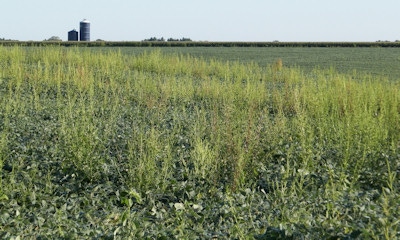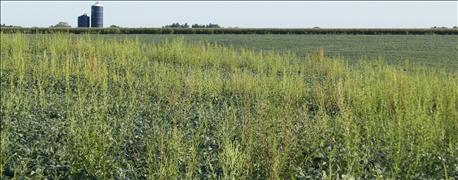
Herbicide resistant waterhemp is a formidable opponent. Every waterhemp plant left standing after treatment may not be herbicide resistant, but this problem weed is spreading throughout Illinois. The management challenge is two-fold. A high percentage of waterhemp is resistant to glyphosate, and many are also resistant to PPO inhibitors. That doesn’t leave farmers a lot of post-emergent control options in soybeans.
Related: Five steps toward controlling waterhemp in corn and soybeans

STOP WEEDS: According to Peltier, soybean varieties will not realize their full yield potential without adequate and timely weed control.
According to Angie Peltier, extension educator with the University of Illinois, one way to fight herbicide-resistant waterhemp is to use soil-residual herbicides. With potentially only one shot at taking out waterhemp chemically, properly applying soil-residual herbicides is imperative.
Peltier offered several best practices for effective soil-residual herbicide applications:
1. Placement is key.
Waterhemp seeds germinate within the top 1/2-inch of soil. Incorporating soil-residual herbicide too deep will impact effectiveness.
2. Apply a full rate according to label guidelines.
Cutting back on rates could end up costing you in uncontrolled weeds and reduced yields. Keep in mind higher rates will maintain some level of control longer into the season.
3. Soil moisture plays an important role.
You can’t control Mother Nature, but a timely rain on dry soils within 7 days after application usually improves the effectiveness of soil-residual herbicides. If more than 10 days pass without rain, consider back-up plans such as mechanical control or physically removing emerged weeds.
4. Timing is everything.
Aim for applications no sooner than 14 days prior to planting. An early application gives soil-residual herbicides time to activate in the soil. However, applying it too early gives the herbicide more time to degrade, meaning less control when you need it. Apply soil-residual herbicides too late and you may run the risk of crop injury.
Peltier noted that waterhemp has an extremely long emergence period. Soil-residual herbicide applications in early spring may not control a late flush of weeds. “These products won’t last forever, but we need to take advantage of proper timing as much as possible.”
About the Author(s)
You May Also Like




